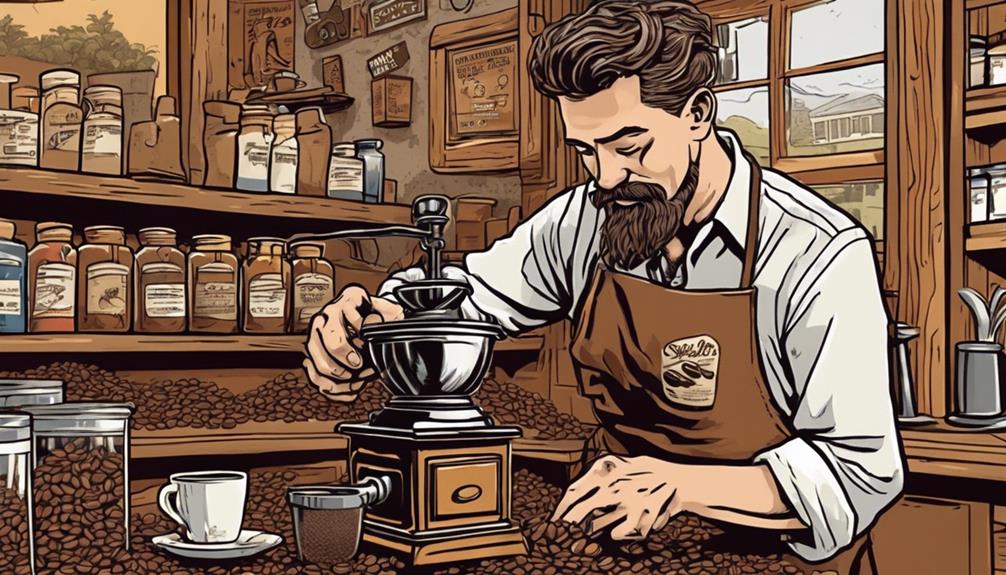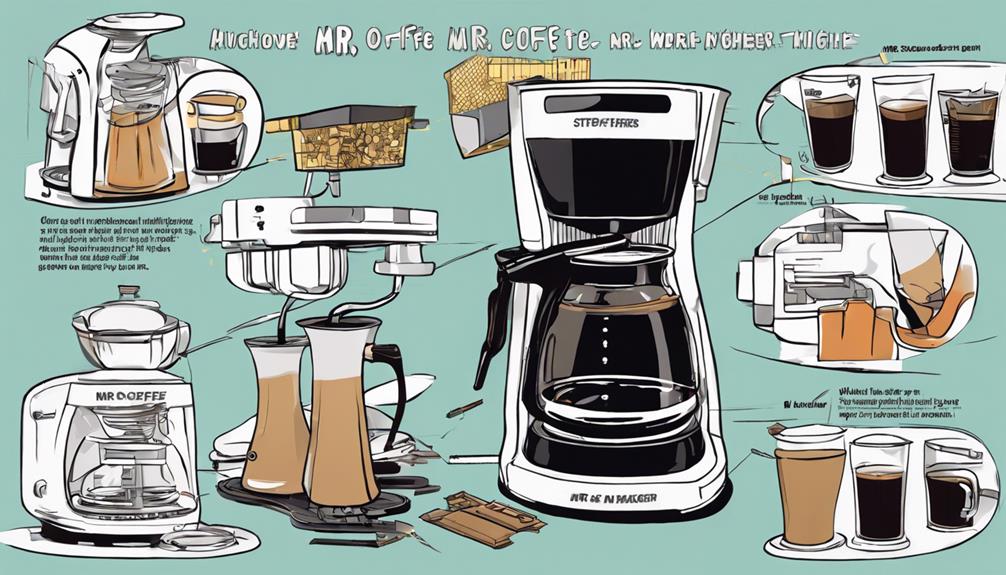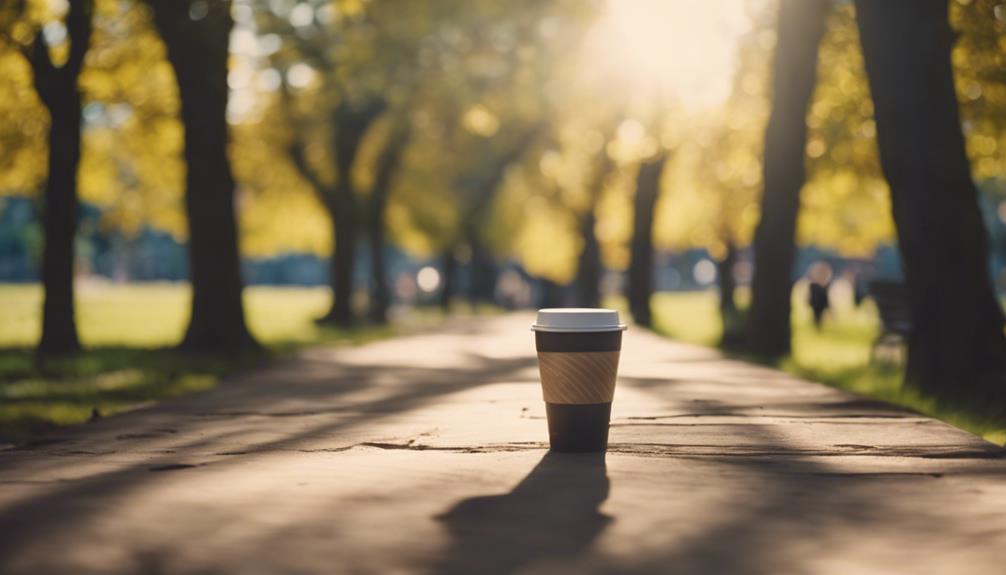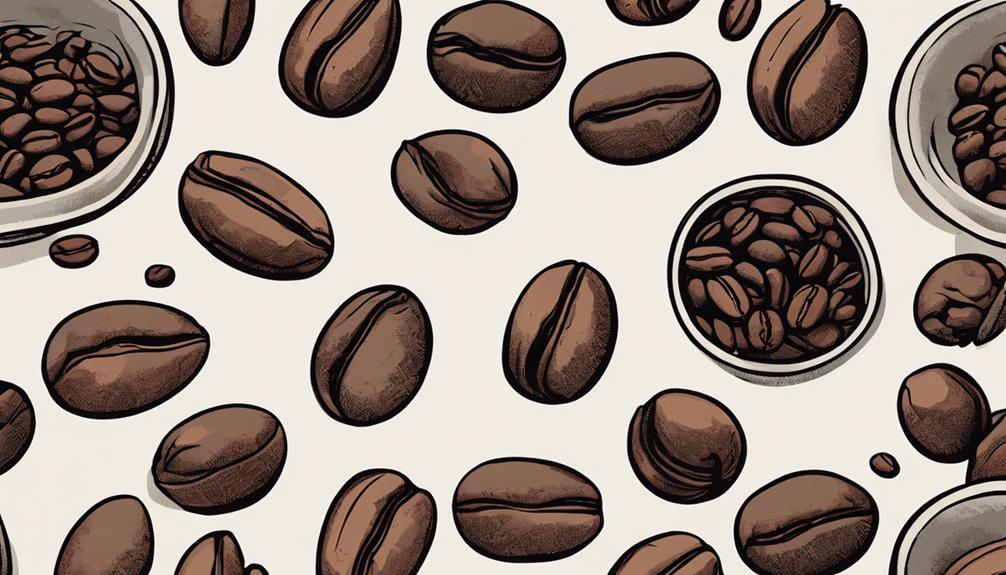If you don’t have a grinder, you can try using a blender or food processor to blend coffee beans. Pulse them in short bursts for a consistent blend. For a manual method, you can get creative – use a mortar and pestle, hammer in a plastic bag, rolling pin, hand mincer, or meat tenderizer. These DIY methods can assist you in creating your ideal cup of coffee without a grinder.
Key Takeaways
- Utilize a blender, food processor, or spice grinder for blending coffee beans without a grinder.
- Pulse the appliance in short bursts for a consistent blend.
- Experiment with different appliance settings for varied blending results.
- Clean the appliance thoroughly before and after use for optimal performance.
- Enjoy a freshly blended cup of coffee using non-traditional methods.
Blending Coffee With Alternative Appliances
Blending coffee without a grinder can be achieved using alternative appliances like a blender, food processor, or spice grinder. These appliances offer alternative methods to grind your coffee beans when a traditional grinder isn't accessible.
When using a blender or food processor, it's important to pulse the appliance in short bursts to achieve a consistent grind size similar to that of a coffee grinder. By experimenting with different grinding methods and settings, you can find the best technique to suit your preferences.
When using a blender, make sure that the blades are clean and dry before grinding coffee beans. Similarly, when utilizing a food processor, ensure the container is free of any lingering odors or residues from previous use. Proper cleanliness and maintenance of these appliances are vital to prevent altering the taste of your coffee beans.
Embrace the versatility of these kitchen tools and enjoy a freshly brewed cup of coffee with a grind achieved without a traditional grinder.
Grinding Coffee Manually: DIY Methods
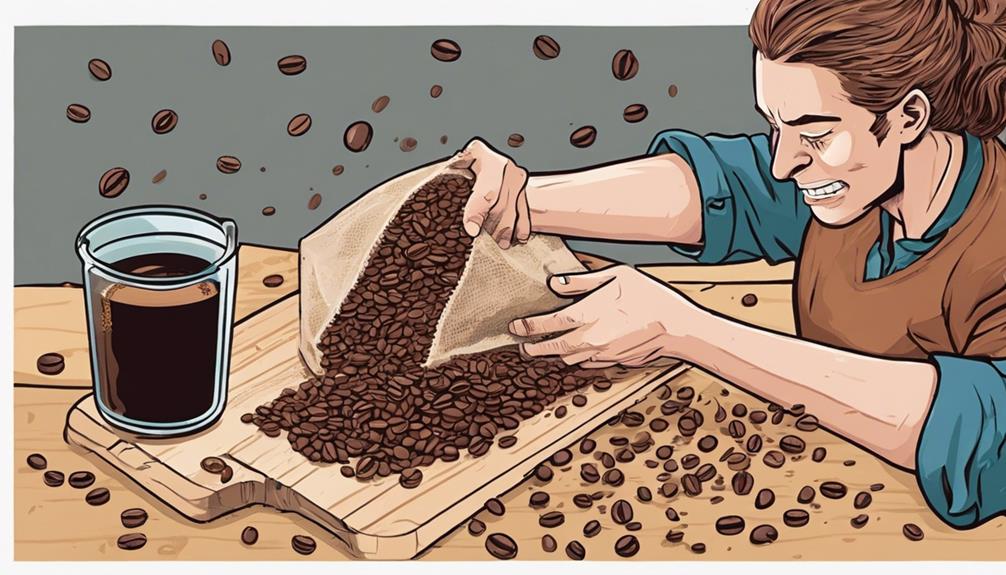
When you lack access to a grinder, manual grinding methods offer DIY alternatives for achieving the desired coffee grind size. Using tools like a mortar and pestle, hammer and plastic bag, rolling pin, hand mincer, or even a meat tenderizer, you can manually grind coffee beans to create the perfect grounds for brewing.
These DIY solutions involve crushing, pounding, or chopping the beans to achieve a range of textures from coarse to fine.
Manual grinding may take more time and effort compared to using a grinder, but it provides you with control over the grind size, allowing you to tailor it to your specific brewing method.
By applying pressure or force to the beans using these manual methods, you can guarantee that the coffee grounds are suitable for your preferred brewing style.
Tips for Grinding Coffee Efficiently
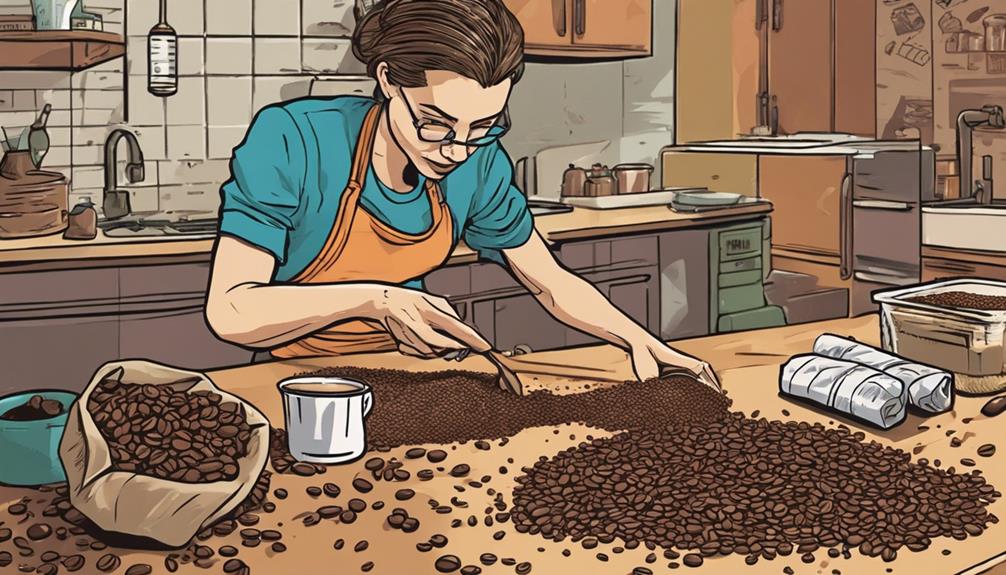
When grinding coffee effectively, remember that the size of the grind impacts the flavor extraction process.
To achieve ideal results, make sure to clean your grinder thoroughly and adjust the settings based on your brewing method.
Consistent and uniform grinding is key to a delicious and well-balanced cup of coffee.
Grind Size Importance
Achieving the perfect grind size is essential for maximizing the flavor extraction from your coffee beans and enhancing the overall quality of your brew. The grind size impacts the strength of your coffee and the consistency of the results, making it a critical factor in your brewing process. Different brewing methods require specific grind sizes to achieve the desired taste and intensity. Here's a breakdown of how grind size impacts your coffee brewing:
| Grind Size | Brewing Methods | Impact |
|---|---|---|
| Coarse | French Press, Cold Brew | Weaker, less intense coffee |
| Medium | Drip Coffee, Pour Over | Balanced flavor extraction |
| Fine | Espresso, Aeropress | Strong, bold coffee |
Efficient Grinding Tips
To grind coffee efficiently, utilize short bursts to maintain consistency and prevent overheating of the beans.
When grinding, make sure you use clean equipment to avoid flavor contamination between different batches.
Adjust the grind size according to your brewing method for best results; finer grinds work well for espresso, while coarser grinds suit French press brewing.
To achieve a consistent grind, measure your coffee beans by weight rather than volume. This method guarantees accuracy and uniformity in your coffee grounds.
Additionally, grinding your beans just before brewing helps preserve the freshness of your coffee and allows for ideal flavor extraction.
Using Food Processors and Blenders

You can achieve a consistent grind size by using food processors and blenders for grinding coffee beans.
Pulse the equipment in short bursts to prevent overheating and guarantee an efficient grind.
These appliances offer a convenient and effective way to blend coffee beans without a traditional grinder.
Blender Grinding Techniques
Consider utilizing a food processor or blender to grind your coffee beans for a consistent texture suitable for brewing. Both blenders and food processors offer a convenient way to achieve the desired grind size without a traditional grinder.
When using a food processor, utilize the pulse settings in short bursts to ensure ideal grind consistency. After grinding coffee beans, it's essential to clean your blender or food processor thoroughly to prevent flavor contamination in future uses. These appliances are powerful options equipped with sharp blades and strong motors, making them efficient tools for grinding coffee beans to the desired texture.
Food Processor Efficiency
Food processors display outstanding efficiency in grinding coffee beans, ensuring a consistent texture with their sharp blades and robust motors.
When using a food processor for grinding coffee beans, remember to utilize the pulse setting in short bursts. This method allows you to gradually grind the beans to the desired consistency without overheating the motor or affecting the final grind quality.
It's essential to clean the food processor thoroughly after each use to prevent flavor contamination and maintain peak performance. Periodically checking the grind size during the process will help you achieve the perfect coarseness or fineness for your brewing method.
Food processors offer a versatile option for coffee enthusiasts, providing convenience and ease of use in grinding coffee beans.
Consistency in Grind
Blenders and food processors excel in achieving consistent coffee bean grinds for your brewing needs. When using these kitchen appliances to grind coffee without a grinder, focusing on maintaining consistency in the grind is crucial.
Here are a few tips to help you achieve that:
- Utilize pulse settings in short bursts: To prevent overheating the beans and guarantee a uniform grind, pulse the equipment in short intervals.
- Thorough cleaning is key: After each use, make sure to clean the blender or food processor meticulously to preserve the flavor of your coffee.
- Monitor grind size: Periodically check the grind size to ensure that it aligns with your brewing method's requirements.
To achieve the perfect cup of coffee without a grinder, these practices will help you achieve a uniform grind that enhances the flavor profile of your brew.
Alternative Grinding Methods for Coffee
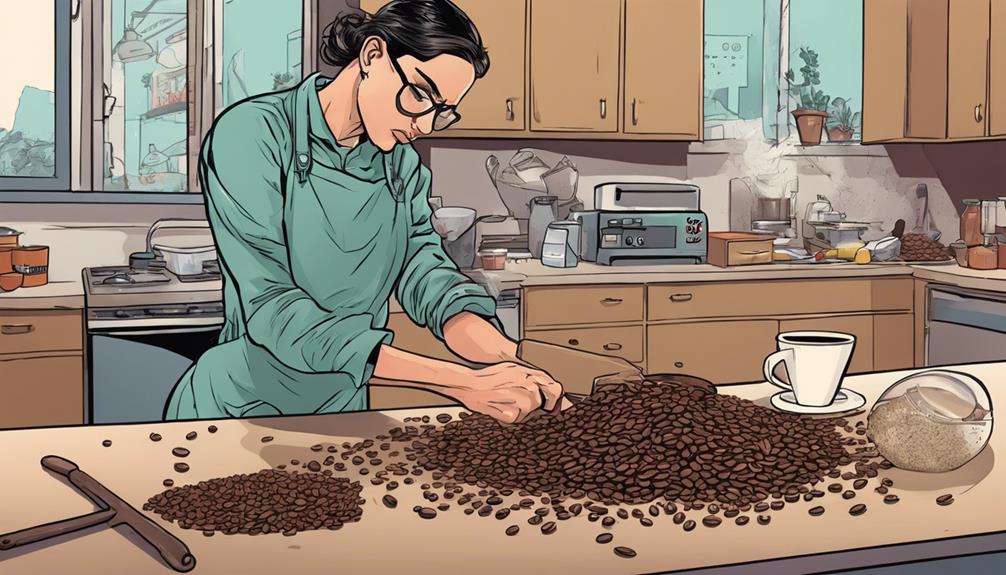
Exploring alternative grinding methods for coffee offers a hands-on approach to achieving your desired grind size without a traditional grinder. If you're aiming for a coarse grind suitable for a French press, a rolling pin or a hammer can be handy tools to crush the beans.
For a finer grind, using a knife to chop the beans finely or a mortar and pestle to pulverize them can be effective. If you prefer a more controlled approach, a hand mincer can provide a consistent grind.
These alternative methods may require more effort than using an electric grinder, but they offer flexibility in achieving different grind sizes. While the results may not be as uniform as those from a grinder, manual methods can still produce grounds suitable for brewing.
Experimenting with these techniques can help you find the right method to match your taste preferences and brewing equipment.
Importance of Grind Size in Coffee
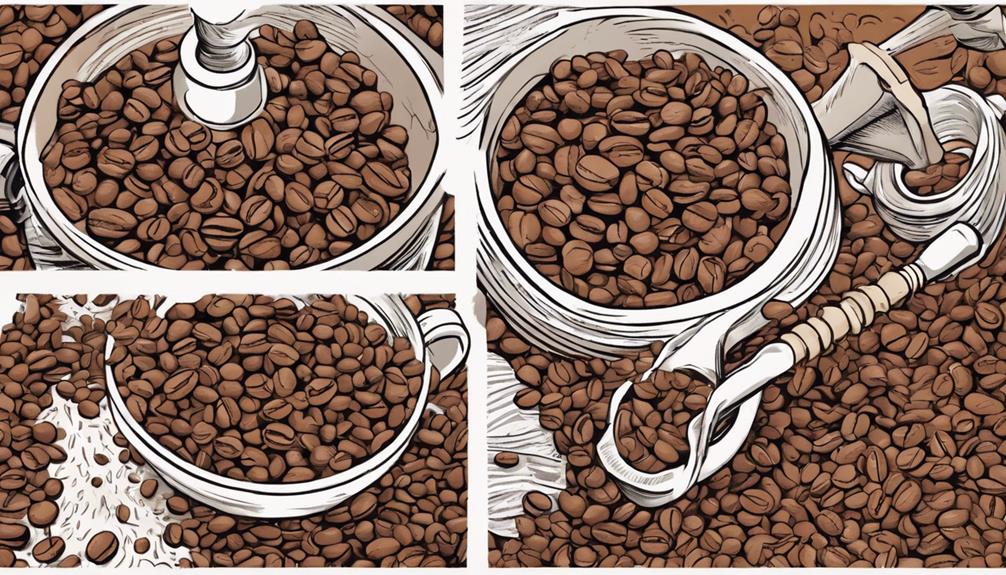
Understanding the significance of grind size in coffee is essential for achieving the perfect cup tailored to your preferences. Here's why it matters:
- Coffee Extraction: The grind size affects how quickly water extracts flavor compounds from the coffee grounds, impacting the overall taste of your brew.
- Brewing Methods: Different brewing methods, such as pour-over or French press, require specific grind sizes to optimize extraction levels and achieve the desired flavor profile.
- Surface Area Impact: The surface area of the coffee grounds exposed to water varies with grind size, influencing the strength and complexity of your coffee.
Frequently Asked Questions
How to Blend Coffee Beans Without a Grinder?
To blend coffee beans without a grinder, consider using a blender for a consistent grind, a food processor for adjustable sizes, a mortar and pestle for manual control, or try the rolling pin or hammer method for a unique approach. If you prefer a more traditional method, you can also use a rolling pin to gently crush the coffee beans until they are the desired consistency. Another option is to place the coffee beans in a sealed plastic bag and use a hammer to crush them, being careful not to puncture the bag. How to blend coffee beans ultimately depends on your preferred technique and desired result. Just remember to be mindful of the potential mess and noise levels when using these methods.
How to Blend Coffee Beans at Home?
Want to blend coffee beans at home? Grab a blender or food processor. Experiment with different beans in small batches. Grind them separately for consistency. Adjust blending time for desired texture. Store in an airtight container for freshness.
How to Grind Coffee Beans With a Hand Blender?
To grind coffee beans with a hand blender, pulse in short bursts for a consistent grind. Clean and dry the hand blender before and after use. Use the pulse setting to gradually grind to desired consistency. Check grind size periodically.
How to Grind Coffee Beans With a Rolling Pin?
To grind coffee beans with a rolling pin, place them in a bag or between parchment paper. Apply even pressure as you roll the pin over the beans until you achieve the desired grind size. Check periodically for consistency.
Conclusion
Now that you've learned how to blend coffee beans without a grinder, you can enjoy a delicious cup of coffee anytime, anywhere.
Whether you're using a food processor, a blender, or grinding manually, the possibilities are endless.
Experiment with different methods and grind sizes to find your perfect cup of coffee.
So go ahead, get creative, and elevate your coffee game with these DIY solutions!


